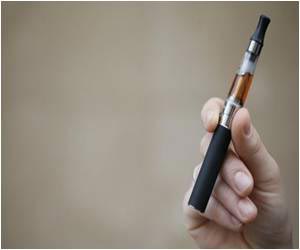There's a need for increased awareness of the safety hazards associated with e-cigarettes.

A few weeks later, a 20-year-old man with severe burns to his right thigh arrived at the hospital's emergency room for care. Not long after, a third man, this one 37 years old, came in with a severe burn to his left thigh and buttocks.
That's when Vercruysse, a UA-Banner burn surgeon, started to ask those patients and ones with similar wounds how they got burned. "They all told me basically the same thing," he says. "They had an electronic cigarette in their pocket, then they started feeling a lot of heat in their pocket and then they couldn't get their pants off or get the device out of their pocket quickly enough."
Vercruysse says he then started perusing the medical literature and noticed no one had written about this topic before. So, he and his colleagues decided to write a case report describing the initial three patients they had treated for e-cigarette burns.
Their study appears in the May 2017 issue of the journal Burns and points to lithium ion battery failure as the culprit.
"These cases are among the first recognizing thermal injuries sustained from the lithium-ion batteries contained in electronic cigarettes, which means there's a need for increased awareness of the safety hazards associated with e-cigarettes," says Vercruysse.
Advertisements
The researchers' study comes at a time of increasing scrutiny of lithium ion batteries contained in so-called electronic nicotine delivery systems, or ENDS, which include electronic cigarettes. Earlier this month, the U.S. Navy suspended the use, possession and storage of ENDS aboard ships, submarines, aircraft, boats, craft and heavy equipment. And the U.S. Food and Drug Administration and the Center for Tobacco Products hosted a science-based public workshop on April 19 and 20 in Silver Springs, MD, to gather information and stimulate discussion about these batteries.
Advertisements
"So you can have a relatively small number of calories contact you for a long time, and you get a burn, or you can have a relatively large number of calories contact you for a relatively short time and you get a burn," says Vercruysse. "With these cases, there were relatively a lot of calories and the skin isn't that thick, so you get a bad burn."
In fact, the paper describes what's known as "thermal runaway," caused by thermal, mechanical or electrical damage to the battery. No matter the cause of the damage to the battery, once its damaged, the battery's internal temperature can rise uncontrollably. And once the internal temperature rises, the heated lithium vaporizes and decomposes, releasing gaseous lithium within the battery and increasing its internal pressure. The increasing internal pressure, in turn, can cause the electrolytic component to ignite, resulting in an explosion or fire.
"I think in general the public thinks that e-cigarettes are somehow better for you than tobacco cigarettes, but they still deliver nicotine, which isn't good for you, and this particular product has a defect where the battery can malfunction."
Source-Eurekalert










